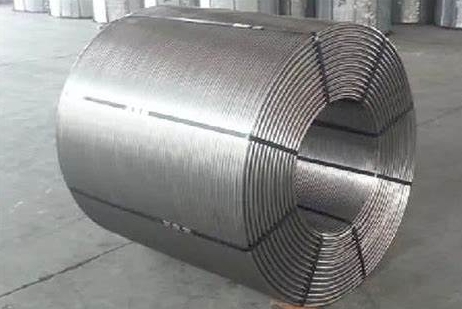
Cored Wire Technology is a type of filler metal that utilizes a tubular construction with a central metallic sheath surrounding a powdered core. It can improve productivity, reduce costs, and enhance quality when used correctly. However, because the wire costs more than solid and flux-cored solid-state wires, it's important for companies to conduct a thorough cost and quality assessment of its potential impact on operations before making a commitment to the new welding process.
For starters, take into account the costs for labor in your shop. As this will be the major expense in your shop, any reductions to cycle time without impacting weld-quality can add up. The benefits of metal-cored steel wire are most evident and dramatic in this area.
Due to its high deposition, metal-cored steel wire enables welders achieve faster travel speeds. The result is a greater efficiency in the arc process, and reduced distortion of important components. Metal-cored cables also have a high penetration rate, which allows welders more ease in bridging gaps, reducing quality problems and downtime due to rework.

Metal-cored wires have a low spatter volume, so they can often eliminate pre-weld cleaning activities, such as grinding, sand blasting or applying anti-spatter, that can consume significant labor and equipment resources. Because metal-cored wiring has a lower spatter volume than other wires, it can eliminate some preweld cleaning processes, like grinding, blasting, and anti-spatter. These activities can be expensive in terms of labor or equipment.
A further advantage of using metal-cored wire is its ability to weld through rust, mill scale and other surface contamination, allowing welders to bypass these costly activities that can decrease productivity by introducing bottlenecks in your fab shop. Thereby, the company can allocate their workers to higher value work. Ultimately, they will improve their profitability and productivity.
The potential of metal-cored to increase productivity should be evaluated by considering all aspects of the operation. For example, they need to take into consideration the length of time the arc is on, parameters for the welding processes, and speed. Different metal-cored solutions are available, and can satisfy a range of requirements. In order to get the most out of the cored process, it is crucial that the welder chooses the right welding equipment. For cored MIG, the pulse mode must be shorter than for solid MIG. Also, the power source should be programmed according to this. One cored MIG wire should work for every position on one machine. A dedicated pulse mode can also increase productivity for wires with metal cores. Contact Gedik Welding for further information on the different products available for your specific application.

Write a Message